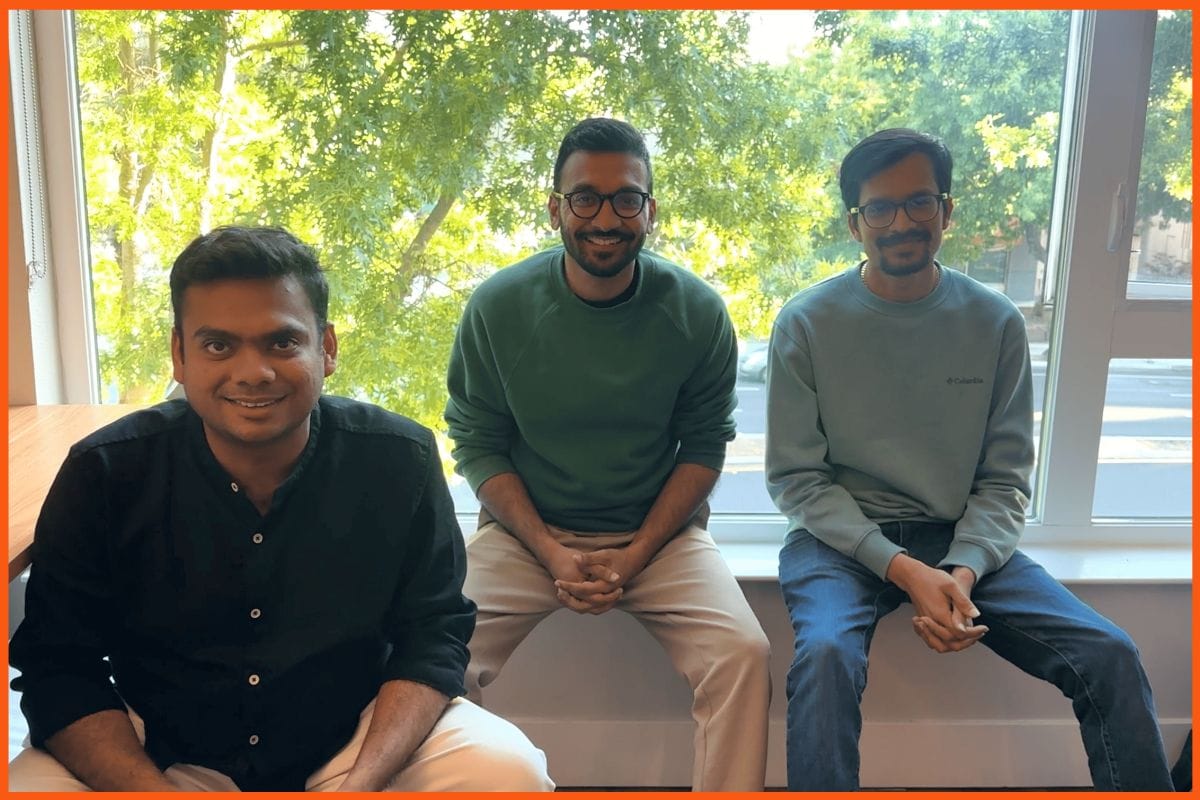Atul Rai, Co-founder and CEO, Staqu Technologies, Shares Vision for Seamless Image Analysis and Information Extraction Solutions
Year End Stories
StartupTalky presents Recap'22. This is a series of interviews in which we conduct in-depth discussions with founders & industry leaders to understand their growth in 2022 and their predictions for the future.
AI-based services refer to services that leverage artificial intelligence technology to perform tasks that would otherwise require human intelligence. Artificial Intelligence (AI) has the potential to play a significant role in improving the effectiveness and efficiency of homeland security operations.
AI can be used to analyze vast amounts of data from multiple sources, including social media, satellite imagery, and sensor networks, to identify potential security threats and prevent them before they occur. AI is helping different sectors, including manufacturing and real estate, improve products and services.
The AI industry in India is growing rapidly and has the potential to play a significant role in the country's economic growth. The Compound Annual Growth Rate (CAGR) of the Artificial Intelligence (AI) industry in India is expected to be high in the coming years. According to a report by NASSCOM and EY, the AI industry in India is expected to grow at a CAGR of around 20–25% from 2019 to 2025.
For this Interview, we invited, Atul Rai, Co-founder and CEO of Staqu Technologies and we talked about the growth, challenges, insights, and future opportunities in the AI and analytics industry.
StartupTalky: Atul, what service does your company provide? What was the motivation/vision with which you started?
Atul: I (Atul Rai) along with my friends Anurag, and Pankaj Co-founded Staqu in 2015, which is an award-winning AI research startup with more than 7 years of experience to solve the problem of automation in the audio-video data management domain through our product JARVIS. Our vision is to facilitate a seamless solution for any problem involving image analysis and information extraction.
JARVIS technology was initially developed for homeland security, but after achieving exceptional outcomes, we subsequently spread our wings to other public and private sectors, including Real Estate, Manufacturing, and Retail, as well as undertakings like smart cities, infrastructure, and Covid-19 solutions. Cameras armed with Staqu’s advanced video analytics tool JARVIS can offer valuable insights while supervising all parameters in object detection, crowd analytics, footfall analytics, queue management, heatmap analysis, violence detection, fire & smoke detection, smart parking management, traffic congestion detection and behavioral changes that traditional cameras cannot evaluate or foresee.
On direct lines, we have over 100 companies working with us, including some of the top brands such as Raymond, Café Coffee Day, Starbucks, Chaayos, Crocs, GMR, JK Cement, Agrocel, and others. In addition, nine state police forces are collaborating with us to meet their needs for safety and security monitoring and criminal identification.
StartupTalky: What new features have been added in the past year? What is/are the USP/s of your SaaS?
Atul: When it comes to enabling safety and data analytics through fully integrated technology, we are miles ahead of any competitor in this segment. The first advantage is that the JARVIS platform is plug-and-play, which means that if you have a camera, you are not required to install any hardware; all that is necessary is a working internet connection. Second, in addition to the video stream, we are analyzing the audio data from the CCTV. This means that scenes will be analyzed using both audio and video data (bimodal data), leaving no gaps. Lastly, we provide video management software that permits users to aggregate all feeds from various locations and view them all in real-time while also receiving real-time alerts. So, while our competing companies show post-event analysis or day-by-day reporting, we, on the other hand, enable real-time feeds. Furthermore, we target not only CCTV cameras but also drones, and the Jarvis platform can even analyze mobile streams.
StartupTalky: How has the AI and analytics industry changed in recent years and how has your company adapted to these changes?
Atul: In recent years, changes in analytics technologies have been rapid and widespread. Data and analytics had grown in importance to the point where it was being referred to as the new oil or gold.
In today’s hypercompetitive marketplace, modern businesses have begun to recognize the value of data analytics, as they depend heavily on data-driven solutions rather than dominant narratives or instincts to make more precise choices, maximize efficiency and be more intelligent. It’s no surprise that companies are heavily investing in visual data analytics to improve everything from retailing and manufacturing operations to security.
With cutting-edge image recognition technology and smart monitoring of objects, crowds, perimeters, and vehicles, JARVIS has proven to be one of the simplest highly configurable AI-based Video Analytics Engines. JARVIS offers a user-friendly dashboard that enables clients to track critical incidents and respond appropriately. The Video Wall panel facilitates centralized monitoring of all cameras from different locations on a single screen. Additionally, JARVIS Video Analytics provides dependable, dynamic, and comprehensive solutions with over 40 use cases. Furthermore, insights from 85+ analytics dramatically improve operational intelligence and accelerate situational awareness.

StartupTalky: How do you stay up-to-date on the latest trends and developments in the AI and analytics industry?
Atul: At Staqu, we keep up to date on all technological and industry trends. We enjoy reading the most recent research papers in the Artificial Intelligence (AI) domains that have a good number of citations. On Twitter, we also follow some researchers and technologists who share very insightful perspectives on AI. In addition, our team enjoys listening to podcasts and following the lives of creators in the technology industry on YouTube.
StartupTalky: What key metrics do you track to check the company’s growth and performance?
Atul: Revenue is among the most insightful business metrics that we track regularly at Staqu. By analyzing our company’s sales, we can determine how well our products and services are performing in the sector and whether our marketing tactics are effective. We also like to track the number of visitors to our company’s website each month because it is a great way to assess the hype of our product offerings and the overall public image of the company. Furthermore, we monitor our customer satisfaction index regularly through feedback and surveys to guarantee that they are pleased with our offerings.
StartupTalky: What were the most significant challenges your company faced in the past years and how did you overcome them?
Atul: The toughest challenge was dealing with the marketing of artificial intelligence, which was a novel idea in 2015. When AI was first introduced, most people thought of it in terms of robots that could perform human tasks. However, as the market developed and the right investors got involved, this barrier was effectively addressed. Furthermore, India falls short behind regarding the infrastructure of camera systems that are less than 5 megapixels in most places. As a consequence, we’ve had to develop features to handle low-resolution video feeds, multi-camera trafficking, and other issues. Like any other business we had to encounter other challenges as well, but fortunately, we have a dedicated team of employees who see every obstacle as an opportunity for the company’s overall growth.
StartupTalky: Customer Success has become more important than ever. How do you keep your customer engaged to stop churn?
Atul: In the AI domain, if the user experience with software or applications is sluggish, glitchy, or otherwise complicated for them to implement, they are less likely to deploy it or build expertise with it, increasing the likelihood that they will not remain loyal. Customers want to feel valued and accepted by the communities they support, and if they have negative interactions with the company, they will leave.
Therefore, at Staqu we employ proactive customer service, which actively seeks to identify and resolve issues before they negatively impact the customer experience. We also improve customer experience through other channels of communication, such as marketing content and social media channels, to reduce customer churn.
StartupTalky: What are the different strategies you use for marketing? Tell us about any growth hack which you pulled off.
Atul: A well-thought-out marketing strategy demands powerful insight, dedication, and research, as well as a time and energy investment. Staqu has a sturdy roadmap in place to ensure that all marketing strategies continue to be integrated with our product portfolio. The first step in expanding our business into new customer geographies is to be able to reach the right target customers through the right mediums at the right time. We also keep track of our customers’ insights, which outline market values, potential, and prospects. Furthermore, we keep our marketing strategy up to date by analyzing our campaign performance. This also allows us to tweak and modify our approach as the business and market evolve and change.
StartupTalky: Content marketing and Community building are something everyone is talking about in SaaS, how do you plan to leverage that?
Atul: Almost every SaaS business (both B2C and B2B) is now utilizing content as part of its branding strategy to orient itself as a specialized thought leader by providing its audiences with valuable, insightful resources. It necessitates a lot of effort to create remarkable content, but it is well worth the investment, notably if it is evergreen and can boost conversions and profits in the long term. Since each SaaS solution has attributed keywords, we initiate our compelling content by considering the terms users search on Google when looking for an AI data analytics product or service. We believe in designing content that provides actionable information to the reader and persuades a potential customer to sign up for our SaaS product/service.
StartupTalky: What are the important tools and software you use to run your business smoothly?
Atul: Software tools are critical for simplifying both internal and external work. Salesforce, Keka, and Slack are a few tools we use to streamline our business processes. We’re also experimenting with Eddy AI for email automation.
StartupTalky: What opportunities do you see for future growth in your industry in India and the world? What kind of difference in market behavior have you seen between India and the world?
Atul: Billions of cameras are used for monitoring around the world. Add to that- there are billions of cameras implanted in smartphones and other personal gadgets, and we have a mind-boggling ecosystem yielding incomprehensible amounts of video data every minute. Therefore, video analytics is a rapidly evolving field around the world, and it will continue to expand in the coming years as data volumes grow exponentially year after year. As a consequence, we have to constantly update our resources to engage with big data. At the same time, what distinguishes this field is that it applies to the evolution of every business in the world. It’s also a thriving industry for young prospective students to enter because there’s a lot of unstructured data, which means there are a lot of interesting job opportunities.
StartupTalky: What lessons did your team learn in the past year and how will these inform your plans and strategies?
Atul: Working in the AI field has taught us the value of listening to and receiving client feedback. This enables us to innovate, renovate, and make constant adjustments and modifications based on clients’ use cases and preferences. Besides focusing on our product portfolio and clients we also realized the importance of investing in our employees because they are the most valuable assets one can have.
StartupTalky: How do you plan to expand the Customers, product features, and team base in the future?
Atul: Growth and expansion are major considerations for all business owners and entrepreneurs. For us, expansion encompasses not only improving business traction and offering new products or services, but also optimizing employee and shareholder values, ramping up marketing efforts, forming partnerships, merging with or acquiring another company, and advancing online. With video and image data accounting for 60-70% of all data on the internet, our growth strategy is to maximize on all fronts. The key, however, will be to serve as many industries as possible by deploying JARVIS to automate their internal operations.
StartupTalky: One tip that you would like to share with another SaaS founder?
Atul: Looking at the market as a whole, developing software is becoming increasingly easier to set up, and the industry is becoming increasingly congested. We now have more available skills, more advanced technologies, and so on, all of which lower the impediment to entry for developing software. What will set you apart is your brand and your ability to discover and connect with potential clients. Most importantly, every successful business must address problems and gaps that no other brands are currently addressing.
We thank Atul for spending his valuable time and sharing his learnings with all of us.
You can read other Recap'22 Interviews here.
Must have tools for startups - Recommended by StartupTalky
- Convert Visitors into Leads- SeizeLead
- Website Builder SquareSpace
- Manage your business Smoothly Google Business Suite






